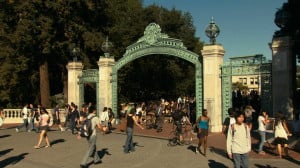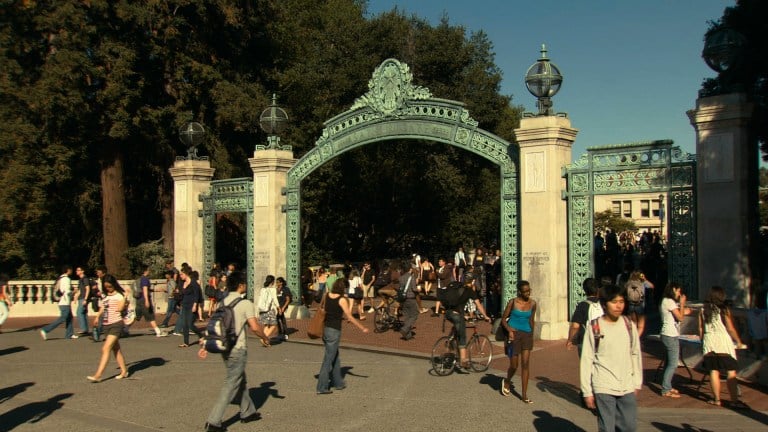Renowned documentary filmmaker Frederick Wiseman has done it again — and, this time, his focus is closer to home. Wiseman’s 38th documentary, “At Berkeley,” exposes the entrails of Stanford’s nearby rival, University of California at Berkeley. The movie is a four-hour collage of scenes from across the campus, from trustee and faculty meetings to classroom discussions, student protests and ROTC workout sessions. Taken together, “At Berkeley” is a portrait of an institution striving to stay loyal to its founding ideals, while also reshaping itself to meet challenges of the 21st century.

The film’s “fly on the wall” shooting– characteristic of Wiseman’s work generally — allows audiences to witness the inner workings of Berkeley’s administration, as the university considers new budgeting policies. Prompted by massive reductions in state funding, then-chancellor Robert J. Birgeneau leads a series of administrative meetings about bureaucratic restructuring. While many members of the community eagerly await greater efficiency, Birgeneau is also confronted by faculty members critical of University “corporatizing” and staff members afraid for their jobs.
Wiseman follows these conversations into classrooms, where teachers use the university’s predicament as a point of departure for discussions about the role of government and import of education in American democracy. Ultimately, the discussion takes Wiseman into the streets, where students are organizing a protest responding to tuition spikes but asserting a wide range of demands, including greater resources for special needs and disability students.
Throughout the film, Wiseman captures the bizarre quirkiness of campus life: a virtually all-male audience drooling over a women’s a cappella concert, administrative officials chugging Starbucks coffee in afternoon meetings and students slumped over their laptops, finishing problem sets at the eleventh hour. At the same time, he takes seriously the university’s theory of societal progress, which includes both winning “the battle of ideas” and investing in participatory politics. There is tension in this philosophy, as the university appears to encourage left-wing progressivism and free speech in classrooms while cracking down on student-led activism.
The movie is also interested in the growing role of technology at the university and society at large. “At Berkeley” features long clips of a programmer designing a laundry-folding robot, as well as discussions between a patient, his doctor and researchers, who are working robotic legs to help a paralyzed man walk. The movie comes to speculative finish, with a professor discussing intergalactic space travel — which prods audiences to imagine how the university’s future discoveries will influence humanity in the short and long term.
Like most of Wiseman’s films, “At Berkeley” is primarily a movie about an institution, but it is also a story about the human experience within a system that shapes behavior and ideology. Audiences are privy to the emotional lives of individuals, who struggle to pay for college, survive academically and feel included socially. Where these stories are familiar, Stanford audiences are reminded that the trials and tribulation of young adulthood are not unique to one campus or another.
With its loose, nonlinear form, “At Berkeley” is a film that requires viewers to do the work of interpretation, to make meaning of raw footage. Especially for members of the Stanford community, the film is a conversation starter, requiring subsequent discussion about what it means to belong in a university and to have a stake in a scholarly community. School, Wiseman seems to say, is about the transmission of values across generations. It is for us to decide what those are.
